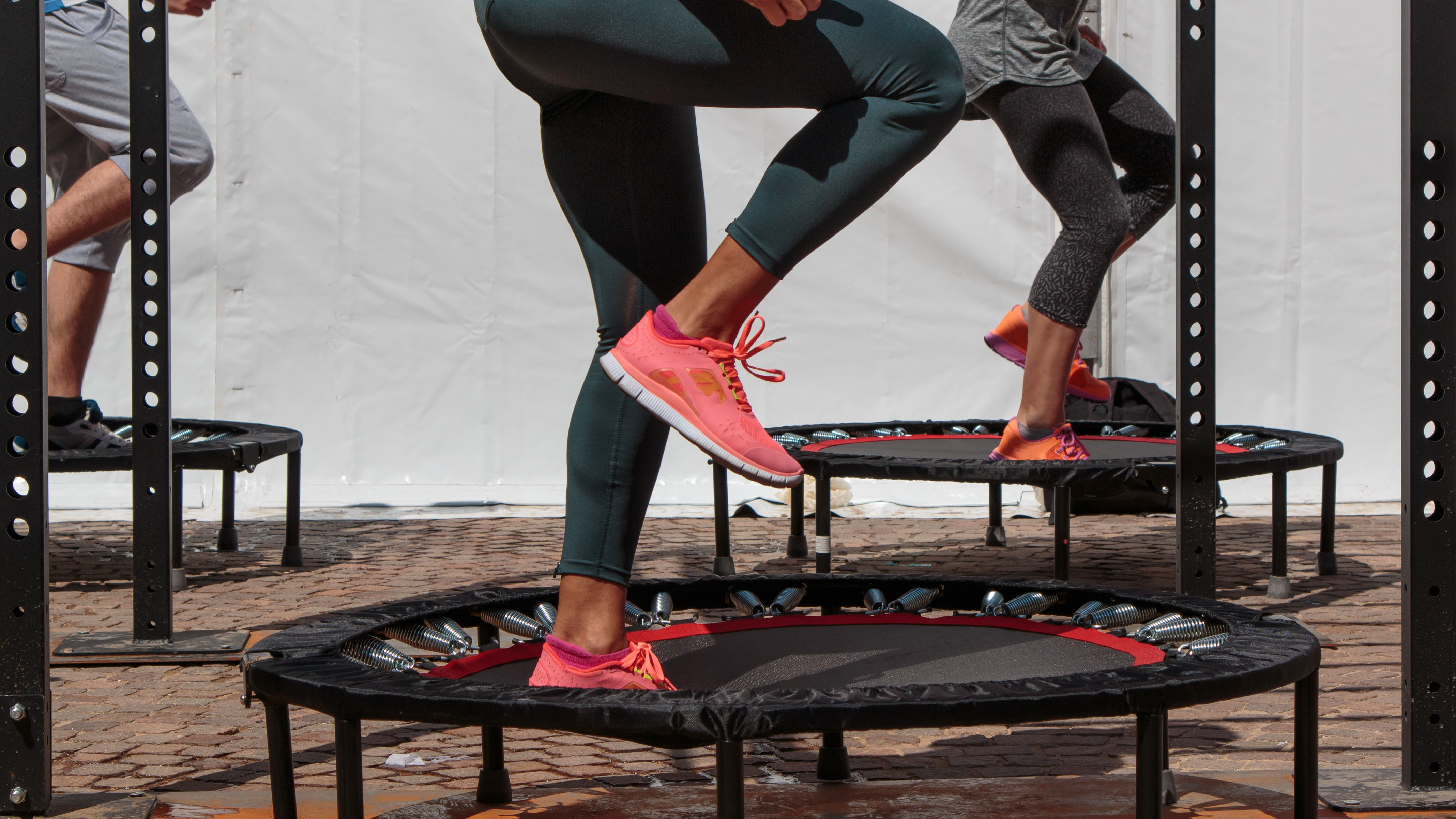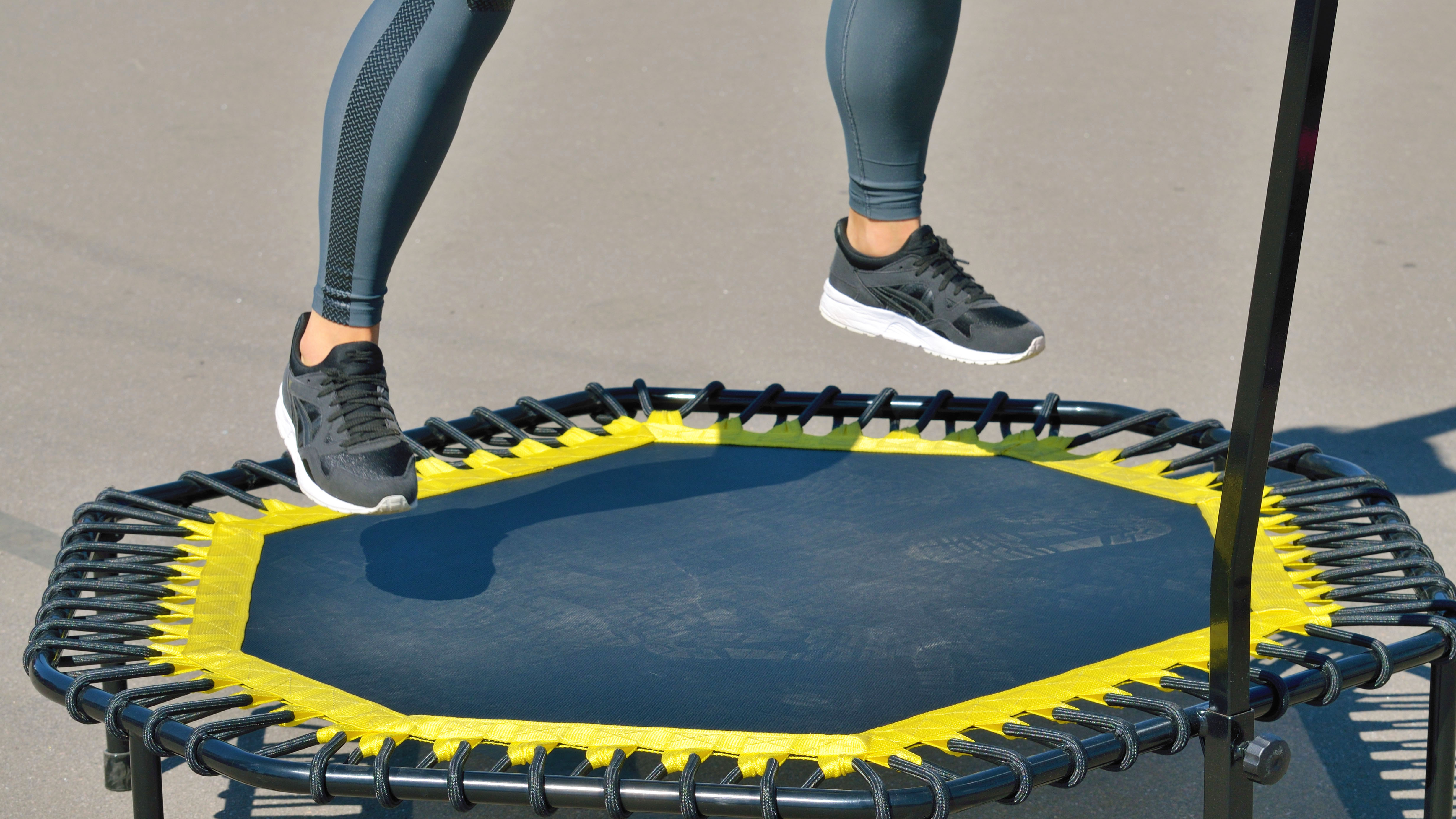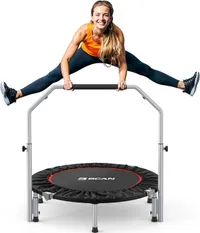Forget running — NASA says ‘rebounding’ is more effective than a 30-minute run, here’s how to do it

If you’re looking to boost your cardiovascular fitness, strengthen your bones and joints, and boost your mood, you might think lacing up a set of the best running shoes and heading out the door is the solution. But what if running just isn’t for you? I’ve got good news — according to NASA, rebounding is more effective.
Rebounding, or bouncing on a mini trampoline, is a low-impact workout that soared in popularity in the 1980s. At the same time, NASA did a study that found just 10 minutes of rebounding could be 68% more effective than a 30-minute run.
Eight participants, aged between 19 and 26, walked and ran on a treadmill at four speeds, and jumped on a trampoline at four heights. Researchers looked at oxygen uptake, acceleration levels, and heart rate.

This folding trampoline is available in a diameter of 40 and 48 inches, can support up to 440 pounds, and has an adjustable foam handle that can be raised as high as 42 inches. It has nearly 12,000 reviews on Amazon, with an average rating of 4.5.
The results found that trampolining put a lot less pressure on the participants’ bodies than the treadmill. What’s more, “the external work output at equivalent levels of oxygen uptake were significantly greater while trampolining than running.” Notably, “the greatest difference was about 68%.” Rebounding made the participant’s joints and muscles work harder than running did, even though their hearts and lungs were working at the same levels.
The rate of oxygen consumption was also found to be twice as efficient when rebounding than treadmill running, plus recovery times were quicker. While there’s drawbacks to the research (it was conducted exclusively on men and the sample size is small), this high-intensity, low-impact form of cardio might be one to consider if you’re looking for a new challenge.
What are the benefits of rebounding?
While running primarily engages the muscles in the lower body, rebounding is a full-body workout. Your legs work hard when bouncing, as does your core, which has to stabilize your body. As you jump, you’re working on your balance and coordination, as well as burning calories. If losing weight is your goal, you’ll need to ensure you’re in a calorie deficit — burning more calories than you consume. The best way to keep an eye on your calorie burn is to strap one of the best fitness trackers to your wrist.
Rebounding is great for building cardio endurance, as your heart rate will skyrocket as you jump. It’s also a fun workout — there’s a reason why toddlers love bouncing on a trampoline. If you’re bored of pounding the sidewalks on your run, why not try bouncing?
Get instant access to breaking news, the hottest reviews, great deals and helpful tips.
How to get started
Looking to try rebounding? All you’ll need is a mini trampoline and enough space around you to ensure you’re safe. Start by building up your time bouncing, and then add more dynamic moves like butt kicks, jogging, star jumps and tucks.
As a reminder, if you’re a complete beginner or you’re recovering from an injury or pregnancy, it’s always a good idea to check with a personal trainer before trying a new exercise regimen.
More from Tom's Guide
- I swapped running for 'Jeffing' for a week — and now I'm hooked
- Goodbye sit-ups! This 10-minute workout will help you build a stronger core and strengthen your pelvic floor muscles
- I tried the 5-4-5 walking technique for a week — and it boosted my fitness and mood

Jane McGuire is Tom's Guide's Fitness editor, which means she looks after everything fitness related - from running gear to yoga mats. An avid runner, Jane has tested and reviewed fitness products for the past five years, so knows what to look for when finding a good running watch or a pair of shorts with pockets big enough for your smartphone. When she's not pounding the pavements, you'll find Jane striding round the Surrey Hills, taking far too many photos of her puppy.
You must confirm your public display name before commenting
Please logout and then login again, you will then be prompted to enter your display name.

